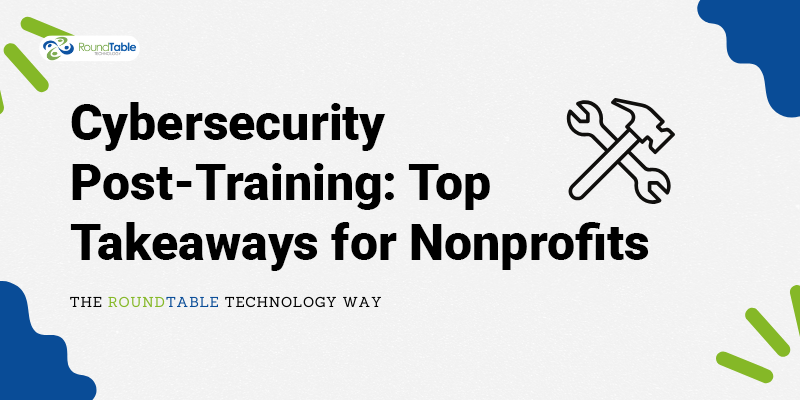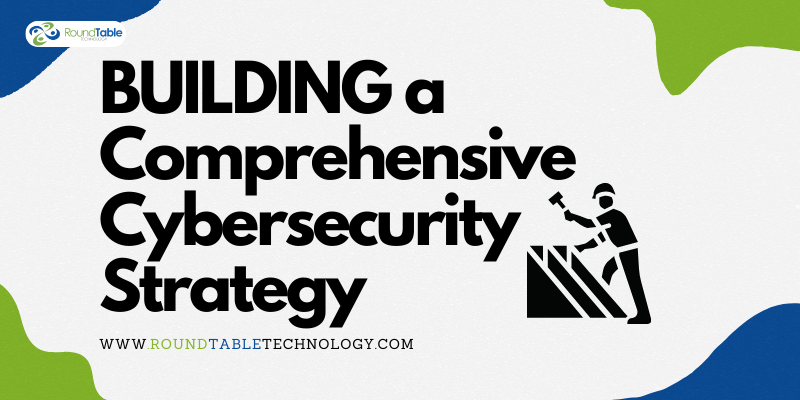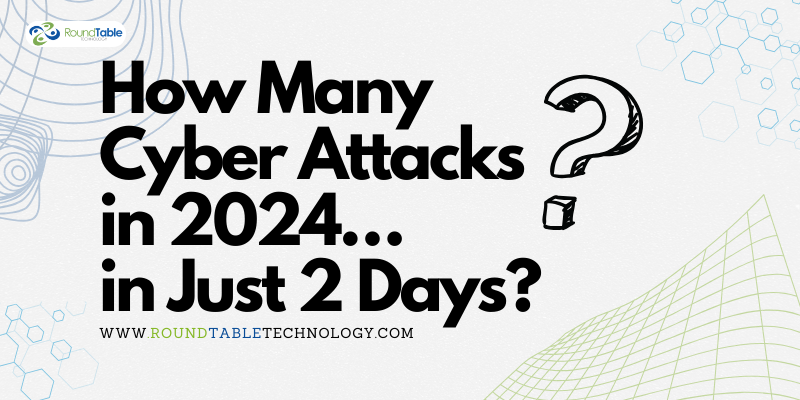Safeguarding Nonprofits: The Importance of Cybersecurity Basics
In 2023, a well-known nonprofit organization dedicated to providing clean water to underserved communities fell victim to a cyberattack. This attack...
2 min read
.jpg) Justin Brown
:
Jan 31, 2024 11:05:10 AM
Justin Brown
:
Jan 31, 2024 11:05:10 AM

In our increasingly digital world, cybersecurity is not just a buzzword but a critical foundation of any organization's operational integrity. This is especially true for nonprofit organizations, which often work with limited resources and handle sensitive data. In the wake of our most comprehensive cybersecurity awareness event this year, The 9th Annual Best Free One-Hour Cybersecurity Awareness Training Ever, it's crucial for nonprofits to distill the key takeaways and understand their practical application. This blog aims to provide a comprehensive summary of the vital lessons and strategies discussed during the event, with a focus on their relevance to the nonprofit sector.
The first and most striking takeaway is the alarming rise in cybercrime. The global costs attributed to cybercrime soared to an estimated $5.7 trillion in 2023, with small to medium-sized businesses (SMBs) - a category many nonprofits fall into - bearing a staggering 46% of this burden. This statistic is a wake-up call for nonprofits to prioritize cybersecurity. It's essential to understand that implementing cybersecurity measures isn't about complicating your processes; rather, it's about creating significant hurdles for malicious entities.
A significant portion of the event was dedicated to understanding common cyber attacks and their mechanisms. These include:
Pretexting: This involves the creation of a fabricated scenario to steal valuable information. Attackers may impersonate co-workers, bank officials, or others to extract sensitive data.
Initiation and Authority: These tactics involve gaining trust or using perceived authority to access confidential information. For example, an attacker might pose as a senior executive to request sensitive data.
Exploiting Emotions: Tactics like leveraging fear, greed, curiosity, or urgency are commonly used. For instance, an urgent email purportedly from a senior official can prompt an unwary employee to act without proper verification.
During the training, several crucial strategies were highlighted to combat these threats:
Verify Out of Band: Perhaps the most important takeaway is the concept of "Verify Out of Band." This means always validating requests or information through an alternate communication channel. If you receive an unusual request via email, confirm it by phone or in person.
Passphrases over Passwords: Move away from traditional passwords and adopt passphrases. These are longer, more complex, and inherently more secure, making them harder for attackers to crack.
Password Managers: Utilizing a password manager not only helps in securely storing passwords but also aids in creating strong, unique passwords for different accounts, thus enhancing security.
Multi-Factor Authentication (MFA): MFA adds an extra layer of security. It typically combines something you know (a password or passphrase) with something you have (a phone or security token), significantly decreasing the likelihood of unauthorized access.
One of the emerging concerns in the cybersecurity domain is the advent of AI-based attacks, like deep fakes. These sophisticated attacks use AI to create highly realistic and manipulated audio or video content. For nonprofits, the risk lies in the potential for misinformation and fraud. Staying informed about these emerging threats and educating your team on how to recognize and report them is crucial.
Beyond these specific strategies, building a culture of cybersecurity within your organization is vital. This includes:
Regular Training and Awareness: Continuous education and training for all staff members on cybersecurity best practices.
Creating Policies and Protocols: Developing and enforcing clear cybersecurity policies and response protocols.
Promoting Open Communication: Encouraging staff to speak up about suspicious activities without fear of reprisal.
Leadership plays a pivotal role in shaping a nonprofit's approach to cybersecurity. Leaders must not only endorse but actively participate in cybersecurity initiatives. This involvement sets a tone at the top and demonstrates a commitment to protecting the organization's digital assets.
For nonprofit organizations, embracing and implementing these cybersecurity strategies is not an option but a necessity. It's about protecting your mission, the people you serve, and the integrity of your data. Remember, cybersecurity is an ongoing process. It requires vigilance, adaptability, and a proactive approach. By staying informed and vigilant, nonprofits can navigate the complex cybersecurity landscape and ensure a secure digital environment for their operations.

In 2023, a well-known nonprofit organization dedicated to providing clean water to underserved communities fell victim to a cyberattack. This attack...

1 min read
In today's digital era, cybersecurity is not just a technical issue but a crucial pillar in safeguarding an organization's integrity. With the...

In recent times, the nonprofit sector, alongside others, has been increasingly targeted by cybercriminals. The intent of this article is to shed...